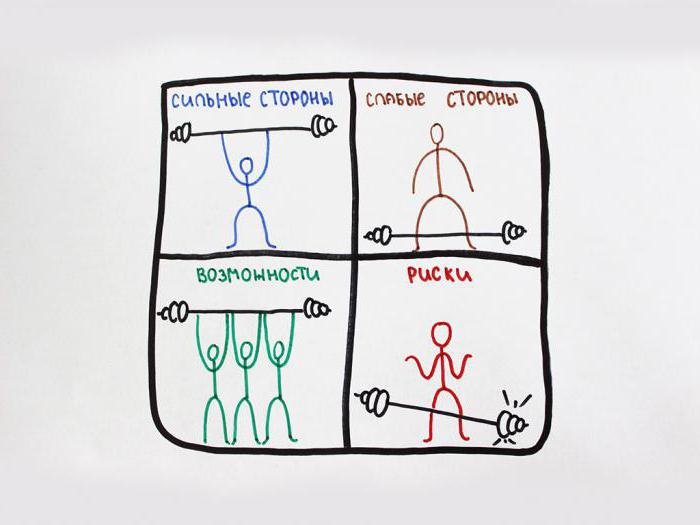Quite often, enterprises are plunged into a deep financial crisis due to various negative factors. This can be facilitated by the unfavorable situation in the state and the general decline in the industry. Reasons may also lie within the company itself. For example, an unsuccessful business strategy or ineffective management work will aggravate the situation in the organization. Then the owner must make one of two decisions - either simply liquidate the business, or try to reanimate it. Maximizing profits and minimizing losses will still give less financial cost than starting a business from scratch. A competent approach and the correct implementation of what was conceived can turn even the most unsuccessful project into a sufficiently liquid enterprise. This article will talk about such a process as maximizing profits, minimizing losses in the short term.
Setting a global goal
Minimization of company losses in the short term begins purely from organizational points. They should be the choice of a direction of activity and orientation towards the future. The management of the organization should be able to correctly set goals: both current and global. The global goal is called mission. In simple terms, a mission is what the company wants to convey to society, what it lives for and what it does. The mission is determined at the stage of organization creation and is revised as necessary. Usually this need arises every five years. Mission is a slogan, the whole essence of organization in a few words.

A goal is a specific task. It should be quantified or evaluated. Its execution time is usually equal to a year. An example of a goal cannot be simply “minimizing losses”. The phrase can not be vague, it must necessarily be specific. It needs to be shaped so that it is tangible and measurable. For example, "increase profits by 20% from today's level to the next reporting period" or "reduce production costs by 10% per year."
Analysis of the current situation
Maximization of profit, minimization of losses of the company is impossible without clarification of problems and their assessment. To understand the current situation in the company, a science such as marketing offers several diagnostic methods:
- SWOT analysis. It is necessary in order to evaluate the organization through the eyes of customers, because it is for them that the whole analysis is carried out. This method allows you to determine the problem field. For its implementation, it is necessary to register the strengths and weaknesses of the company through the eyes of customers, as well as unused opportunities and existing threats.
- Five forces of Porter. This method allows you to evaluate the prospects of the business and the industry as a whole. For this, five things are analyzed that will determine profitability. These are existing competitors, potential competitors, substitute products, suppliers and customers.
- BCG matrix. It allows an integrated analysis of the assortment and shows the life cycle of the product. This method allows you to find out a balanced stock portfolio of the company.

It is these three tools that help highlight the conditions for maximizing profit and minimizing losses.
Marketing research
After the previous step, a list of activities to be implemented appears. To understand whether to implement them, you need to conduct marketing research.They help identify customer needs and competitor capabilities. Minimization of losses is a process that is carried out directly taking into account the opinions of customers.
Marketing research is divided into two main categories - primary and secondary. Secondary are borrowed from others. They are a good option in case of a minimum amount of finance, but it is not always possible to hit the target. Of course, minimizing the loss of the company implies a reduction in operating costs. You need to save on everything, but in this case, the use of borrowed data may not be appropriate. An example might be outdated or not fit your business type.
Initial studies are conducted individually for the organization. They are of three types:
- Qualitative. This is a focus group, in-depth interview and protocol analysis. This type of research allows you to draw new ideas from customers.
- Quantitative. These are all kinds of surveys and retail-audit. These studies are necessary for statistics.
- Mixed. They include both ideas and numbers. These include home-test, hall-test and mystery shopping (mystery shopper).
Market segmentation
Market segmentation is the process of isolating your customers from everyone else. In order to determine them, it is necessary to weed out people according to some principles:
- geography;
- demography;
- psychology.
Having determined your target audience, you can choose the methods and ways of influencing it, so this item is a very important condition for minimizing losses.

Market segmentation also implies capacity calculation. Market capacity is the amount of goods that a company can sell, or money that it can earn.
Pricing management
Depending on the type of product, the company must choose a strategy according to which it will set prices. Minimization of company losses is also caused by financial manipulations in the market, therefore this item will ensure a harmonious product life cycle.
If the product is unique, then initially you can set the maximum cost. With the advent of competitors, it will decline. This strategy is called skimming.
For those products to which the buyer is more sensitive, lower prices are set. People should appreciate the novelty and get used to it. This is called a penetration strategy. Then the cost bar can be gradually increased.
The strategy of average market prices is applied to goods for middle-income people. Market competition, as a rule, in this situation should be calm.
It is also worth remembering that for some goods and services stable prices are set. This rule applies to the prestigious, elite market.
Distribution management
Distribution shows a method of bringing goods from producer to consumer. This path should contain the smallest number of intermediaries so that the goods are not too expensive. But at the same time, customer convenience should come first. Very often, a company loses finances only due to the fact that its sales channels are not properly established. Minimizing losses in the short term requires the organization of a producer-buyer chain in such a way that the cost is the most acceptable.

This process is carried out in several stages:
- The choice of the distribution channel.
- Determining the number of channel members.
- Defining criteria for selecting participants.
- Thinking over control and monitoring systems.
- Thinking over possible mistakes.
Promotion management
Minimization of short-term losses can be carried out using promotion tools. After all, even the highest quality product without a decent promotion loses its advantage. This item includes those actions that should encourage the customer to purchase.They must inform the consumer about the product, convince him to give preference to this organization and make him act. Here you can list:
- advertising;
- publicity;
- sales promotion;
- point of sale advertising;
- the use of sports and entertainment events;
- personal sales;
- direct marketing.
Targeted action
Minimizing losses for each type of business has its own specifics, but you can highlight general tips that will help at least slightly optimize any situation. Firstly, it is necessary to acknowledge the fact of a problem, as well as its essence. It is necessary to determine the very factor that led to the formation of crisis phenomena. It can concern completely different industries and divisions. The trouble may lie in the production itself, technological processes or in the positioning of goods on the market.

The second stage of minimizing losses involves the selection of the most effective and efficient ways to solve existing problems. For this, various directions and instruments of influence are selected. The main and most universal are methods such as reducing cost items, stimulating managers and focusing on active sales, harmonizing cash receipts and costs. Attention should be paid to the structure of accounts payable. The introduction of changes in commercial lending policies, as well as the reform of the process of establishing relations with debtors, will also bring good results.
Ultimately, a plan must be formed that includes a list of measures to overcome the crisis and maximize profits. The budget for each item should be spelled out in it, the terms are set and the person in charge is indicated.
Cost reduction
To minimize costs, it is mainly necessary to use all possible tools to reduce costs. The main levers are tight control and rationing of the main financial items. This method has been a large number of years, but it still remains relevant. This is due to the fact that regulation of the economic sector gives the best results. Even if the dynamics do not go up, then at least it will remain stable. It is also important to stimulate the team to save money. Removing costs that are not directly related to the activities of the enterprise will also have a positive effect. There are also the following factors that allow you to quickly increase profits. These include:
- agree on a budget;
- establish contact with both customers and suppliers;
- consider outsourcing;
- try to introduce new settlement systems;
- optimize the wage system;
- harmonize process costs.
Sales promotion
At this point, you need to do as competently as possible. Many entrepreneurs at this stage make the mistake of wanting to achieve maximum profit by increasing the final price for the consumer. But without preliminary market research it cannot be said whether this action will bring the desired result. Important is not only the pricing policy, but also the way the management itself is implemented. The way in which contact is established with a potential audience greatly affects the profitability of the enterprise.

At this stage, it is necessary to conduct the same marketing research. You need to do an assortment analysis. Determine how much a particular product is profitable, how much is sold and how predictable it is. This allows you to create the most harmonious ratio of percent of products sold.
Cash flow optimization
This item is to regularly check the balance of finances in cash. Thanks to this, it will be possible to track the amount that is on the balance and at the cash desk of the enterprise.It is recommended to create a special registry. Its purpose should be to fix current payments. It is worth paying attention to the importance of certain costs. Only by prioritizing, is it possible to predict cash gaps. Settlement accounts in various financial institutions should be small, that is, the amount of cash should be minimized.
Work with debtors
Optimizing work with debtors is possible only by classifying them according to certain criteria. The main thing is the payment term, regarding which the structure should be built. It is worth highlighting the list of requirements and conditions that will allow us to assess the solvency of the client. For premature repayment of debts, a system of discounts and incentives should be provided.

Payables Restructuring
The essence of this stage is aimed at entities that are a source of financial resources. That is, work in this direction should relate to agreements with creditors to receive various kinds of concessions. For example, this could be a reduction in interest rates or a decrease in debt. Perhaps it will be possible to achieve this by offering various assets.